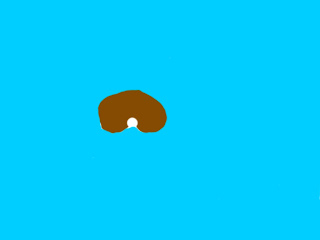Objective: To make a simple telescope and explore how it makes far away objects larger.
Predictions:
The two lenses are round and see through.
There are eight tubes.
I think the tubes are used to build the telescope.
I think I will be able to see three times farther with the telescope.
Observations:
To start our observations, we went to the EMU’s campus and compared looking at things with our eyes and looking at them with the telescope we had made.
First up, a sign. As you can see, the telescope allowed me to see the sign much better.
Next, one of those plastic windmills impaled on the bank of the pond.
Third, a patch of flowers.
Next, a canadian goose.
Fifth, a reed.
To see the night sky, unpolluted, we went to the University of Michigan’s Peach Mountain Observatory. We made a few comparisons between looking at the sky with our eyes and looking at it with telescopes.
With my eyes, I could nearly make out a square of stars in the sky.
With our little telescope, I could see this.
With my eyes, I could see this. (Jupiter above the red line, trees below)
Looking through a commercial telescope, I could see this. (Jupiter's moons are circled in red)
With my eyes, I could see this. (cloud circled in red)
Looking through a 24 inch telescope, I saw this. (24 inches is the diameter of the telescope)
Results:
Building the little telescope was very easy. I think that the commercial and large telescope that we used were much harder to put together than our little one.
My telescope starts out fuzzy when viewing things and gets fuzzier as you zoom in on anything. The commercial telescope had no such problems and was very easy to use. The large telescope was very hard to line your eye up with the view port and if you moved, you would lose the picture.
I was able to discern more detail with the telescope than without them.
Using the telescopes, I saw that Jupiter had multiple moons and that what looked like a cloud was actually a group of stars.
Conclusion:
Three things changed from when I looked at the objects with my eyes and when I looked at the objects with a telescope: light, colors, and space.
The telescopes all had something in common, they all resolved what the stars look like.





















































